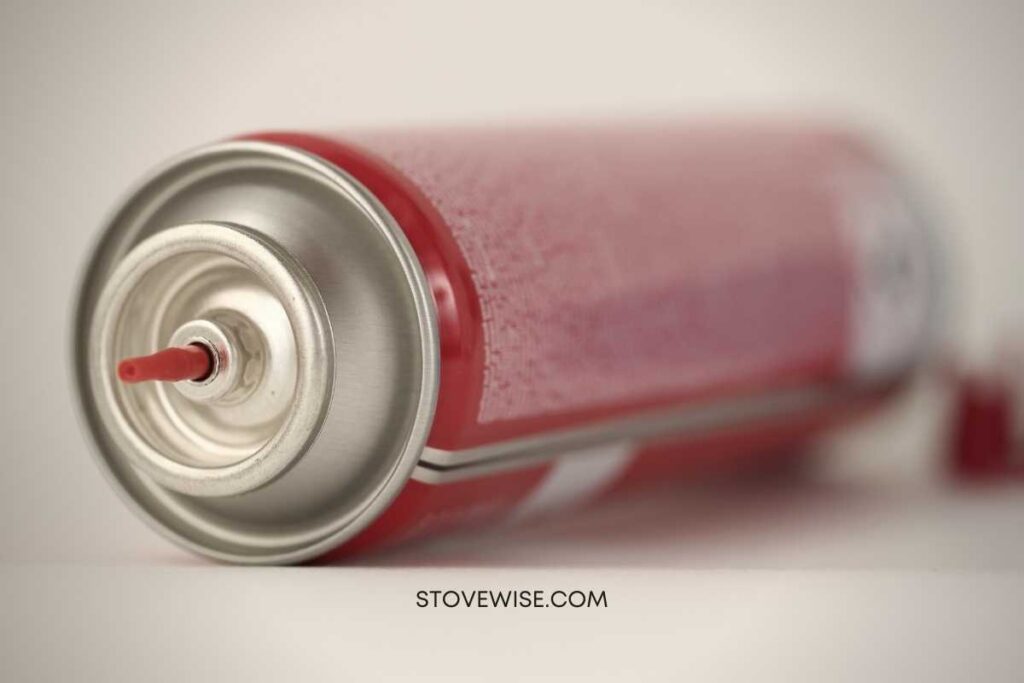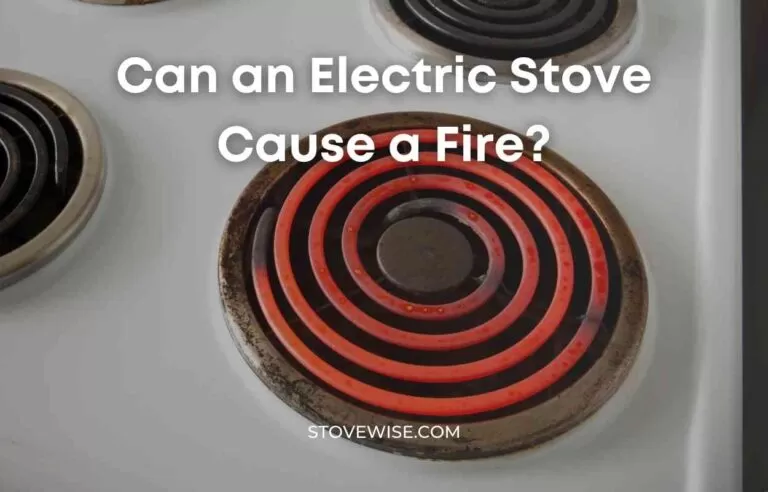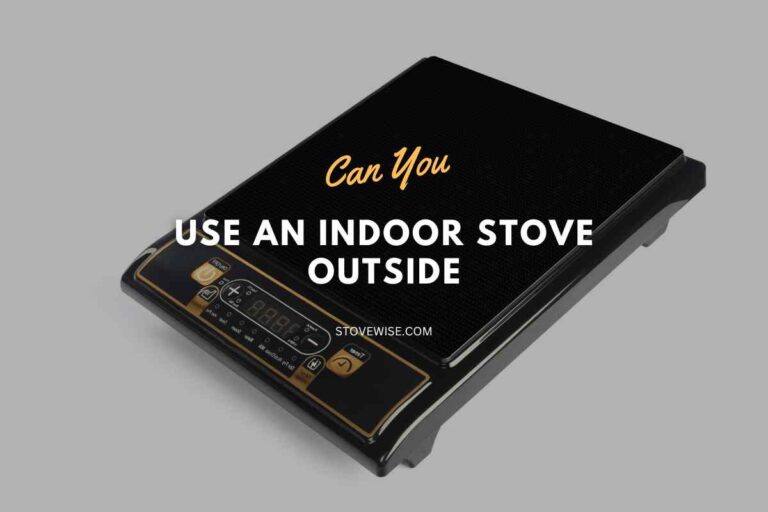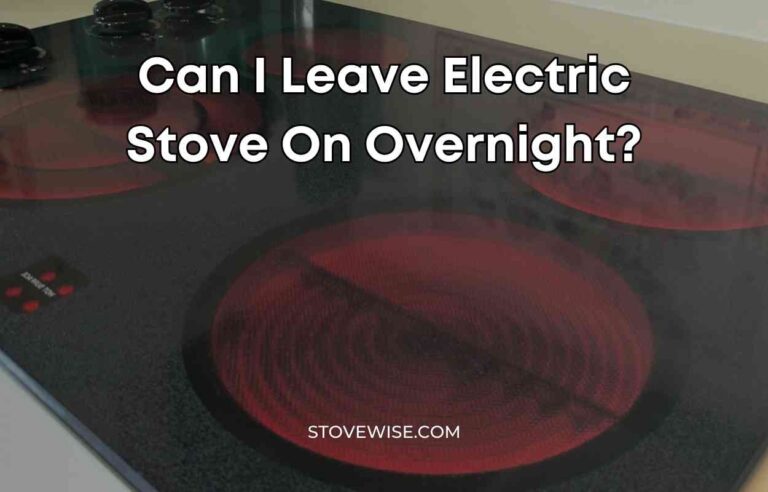Can You Leave Butane Canister in Stove?
Camping and outdoor cooking enthusiasts often rely on portable butane stoves for a quick and convenient meals. However, safety should always be a top priority when using butane canisters.
Can You Leave Butane Canister in Stove?
It is inadvisable to leave a butane canister in the stove when not in use. Disconnecting the canister minimizes the risks of accidental gas leaks, damage, or fires. Store canisters in cool, dry, well-ventilated areas and follow manufacturer guidelines for safe usage and storage.
In this comprehensive guide, we will address common concerns and questions regarding the proper use and storage of butane canisters, and whether it is safe to leave them in the stove when not in use.

Contents
- Is It Safe to Leave a Gas Canister in the Stove When Unused?
- Considerations When Leaving Butane Canister in Stove
- What Are the Risks of Keeping a Canister Stove Connected Overnight?
- Should the Stove Be Disconnected from the Canister?
- Practical Tips for Using a Butane Camp Stove
- How to Safely Store Butane Canisters in a Stove?
- How Long Will a Butane Canister Last in a Stove?
- What’s the Best Way to Store Butane Canisters at Home?
- What Is the Safe Temperature Range for Butane Canisters?
- Conclusion
Is It Safe to Leave a Gas Canister in the Stove When Unused?
Leaving a butane canister attached to portable butane stoves when not in use poses certain risks and hazards. Accidental gas leaks, damage to the canister or stove, and even potential fires could result from improper storage and handling.
To minimize these risks, always follow the manufacturer’s guidelines for usage and storage, and disconnect the canister from the stove when not in use.
Considerations When Leaving Butane Canister in Stove
Duration of Storage
If the stove is only stored for a short period or is being used intermittently, it is generally safe to leave the canister attached.
However, for long-term storage or when not in use for an extended time, disconnecting the canister is recommended to minimize risks.
Temperature
Butane canisters should be stored within a safe temperature range of 40°F to 120°F (4°C to 49°C).
Leaving the butane canister in the stove at extreme temperatures can lead to gas leaks or explosions, so it’s crucial to ensure that the storage area is within the recommended range.
Location
The storage location plays a significant role in determining the safety of leaving a butane canister in the stove. When storing the stove, it should be placed in a cool, dry, and well-ventilated area away from direct sunlight, heat sources, or open flames.
If the storage location meets these requirements, it is generally safer to leave the canister in the stove for short periods.
Stove and Canister Quality
High-quality stoves and canisters from reputable brands are more likely to have reliable safety features and robust construction, reducing the risks associated with leaving the canister in the stove. Always opt for trusted brands and maintain your equipment to ensure safety.
Proper Handling and Usage
Following the manufacturer’s guidelines for using and storing the stove and canister is essential. Make sure the stove is turned off and cooled down before storing, and ensure that the storage area meets the required safety standards.
With proper handling and usage, leaving the canister on the stove for short periods is generally safe.
What Are the Risks of Keeping a Canister Stove Connected Overnight?
While it might seem convenient to leave a canister stove attached overnight, doing so can lead to potential dangers and safety concerns.
Unintentional gas leaks, damage to the stove, and the increased risk of fire are all reasons to disconnect the stove and canister when not in use.
It’s always better to be safe than sorry, so take the extra step to ensure your camping experience remains enjoyable and hazard-free.
Should the Stove Be Disconnected from the Canister?
The decision to disconnect your stove from the canister depends on factors such as duration of storage, temperature, and location.
For short-term storage or when the stove is in use, it is generally safe to keep them connected.
However, for long-term storage or when the stove is not in use, it is recommended to disconnect the canister to prevent any potential accidents.
Practical Tips for Using a Butane Camp Stove
- Select the right stove and canister: Choose a high-quality stove and canister from reputable brands to ensure safety and reliability.
- Set up and use the stove safely: Place the stove on a stable, flat surface, and make sure it’s away from flammable materials.
- Maximize efficiency and safety: Adjust the flame to an appropriate level, and never leave the stove unattended while in use.
How to Safely Store Butane Canisters in a Stove?
Although it is generally recommended to disconnect butane canisters from stoves when not in use, if you must store the canister in the stove for a short period, follow these safety precautions:
- Turn off the stove: Before storing the stove with the canister inside, ensure that the stove is completely turned off and the flame is extinguished.
- Allow the stove to cool: Give the stove ample time to cool down before storage. Handling or storing a hot butane stove can be dangerous and may damage the canister.
- Inspect for damage: Check the stove and canister for any visible damage, such as cracks or dents, which might compromise their safety. If you notice any issues, do not store them together and seek professional advice or replace the damaged component.
- Ensure secure connection: Make sure that the canister is securely connected to the stove. A loose connection may lead to gas leaks or other hazards.
- Store in a suitable location: Place the stove and canister in a cool, dry, and well-ventilated area away from direct sunlight, heat sources, or open flames. Avoid storing them in enclosed spaces like car trunks or cabinets.
- Keep away from children and pets: Store the stove and canister in a location that is out of reach of children and pets to prevent accidents.
- Monitor storage conditions: Regularly check the storage area to ensure it remains within the safe temperature range (40°F to 120°F / 4°C to 49°C) and maintains proper ventilation.
- Periodically inspect: Frequently inspect the stove and canister for any signs of damage, wear, or leaks. Promptly address any issues to ensure continued safe storage.
How Long Will a Butane Canister Last in a Stove?
The lifespan of a butane canister in a stove depends on several factors, including the canister’s size, the stove’s efficiency, and the intensity of the flame.
Butane canisters come in various sizes, with the most common being 4-ounce (100-110 grams) and 8-ounce (220-230 grams) canisters. Larger canisters will naturally last longer than smaller ones.
The efficiency of the stove influences how quickly the butane is consumed. High-efficiency stoves are designed to maximize fuel usage and reduce waste, extending the life of the canister.
The intensity and size of the flame will directly impact how long the butane canister lasts. A higher flame setting consumes more fuel, while a lower flame setting prolongs the canister’s life.
On average, a standard 8-ounce canister can last anywhere from 2 to 4 hours of continuous use, while a 4-ounce canister may last between 1 to 2 hours.
These estimates, however, may vary depending on the specific stove model and cooking conditions.
To get a better understanding of how long a butane canister will last with your specific stove, consult the manufacturer’s guidelines or product specifications.
Remember to always have spare canisters available when camping or cooking outdoors to ensure you do not run out of fuel unexpectedly.
What’s the Best Way to Store Butane Canisters at Home?
Storing butane canisters safely at home is crucial to prevent accidents and ensure they remain in optimal condition for use.
It’s better you store canisters in a cool, dry place to maintain their integrity and prevent exposure to moisture. High humidity or damp environments may cause rust or corrosion, potentially leading to gas leaks.
Always, choose a well-ventilated area for storage to disperse any accidental gas leaks and reduce the risk of fire or explosion. Avoid storing canisters in enclosed spaces like cabinets, closets, or car trunks.
You should keep canisters within the safe temperature range of 40°F to 120°F (4°C to 49°C) to prevent expansion or contraction that could result in leaks or explosions. Avoid storing canisters near heat sources or areas exposed to direct sunlight.
Store canisters away from open flames, sparks, or any ignition sources to minimize the risk of fire or explosion.
What Is the Safe Temperature Range for Butane Canisters?
The safe temperature range for storing and using butane canisters typically falls between 40°F and 120°F (4°C and 49°C). Maintaining this temperature range is crucial to prevent potential safety hazards and ensure optimal performance.
When exposed to temperatures below 40°F (4°C), the pressure inside the canister decreases, causing the gas flow to weaken.
This may lead to poor stove performance, making it difficult to light the stove or maintain a consistent flame. In extremely cold conditions, butane may not vaporize at all, rendering the stove inoperable.
On the other hand, exposure to temperatures above 120°F (49°C) can cause the canister to expand, increasing the internal pressure. This could result in gas leaks or, in extreme cases, cause the canister to rupture or explode.
Avoid storing butane canisters near heat sources, such as furnaces, heaters, or in direct sunlight, to minimize the risk of overheating.
Always store and use butane canisters within the safe temperature range to ensure their proper function and safety.
If you plan to use a portable butane stove in cold conditions, consider using a different type of fuel, such as propane or isobutane, which have lower boiling points and perform better in low temperatures.
Conclusion
Safety is crucial when using butane canisters and portable stoves. By following the guidelines and best practices outlined in this guide, you can ensure a safe and enjoyable outdoor cooking experience.
Always remember to disconnect the canister from the stove when not in use and store it properly to minimize the risk of accidents.
Being responsible and vigilant, you can continue to enjoy the convenience and versatility of your portable stove without any worries.






